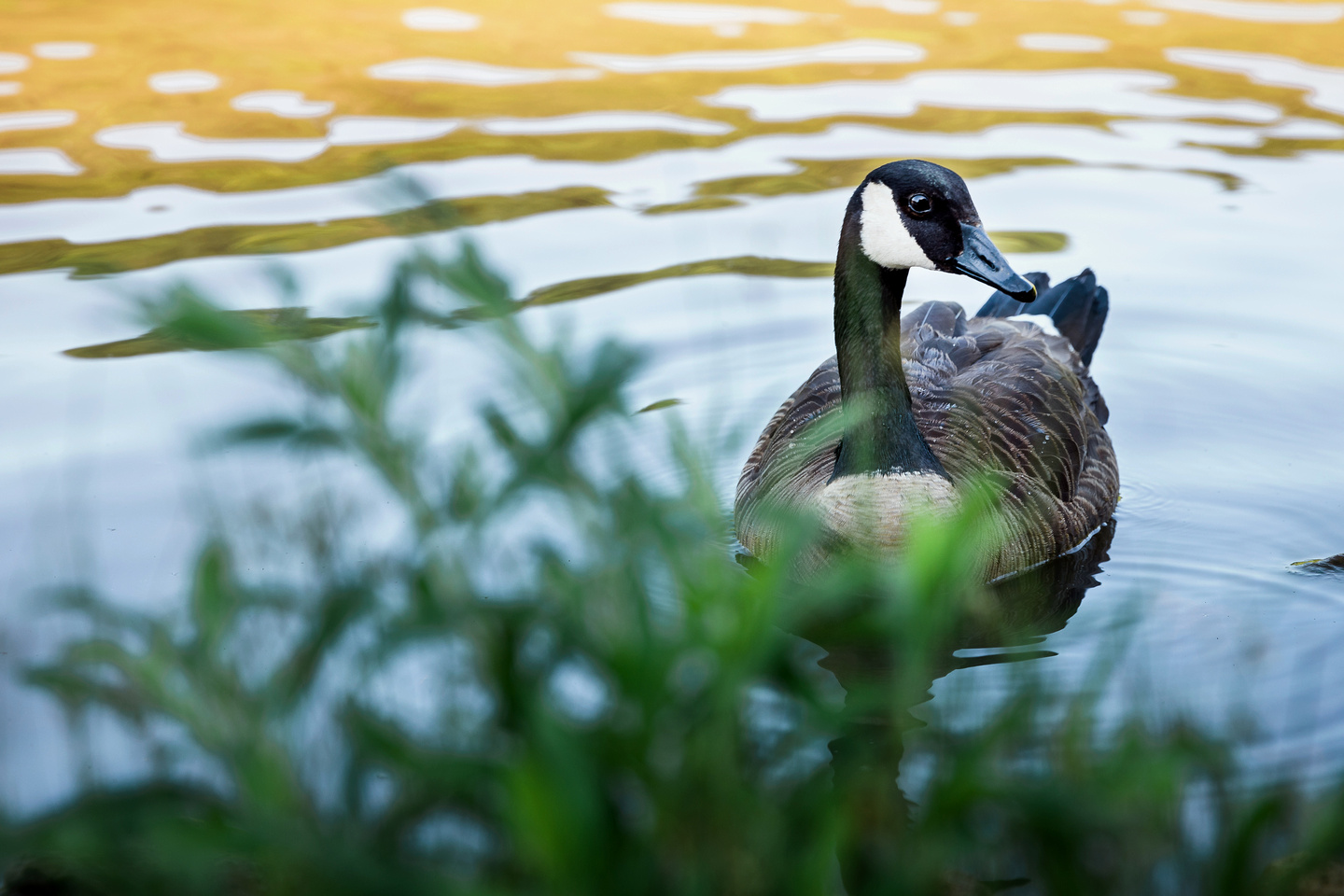When it comes to counting migratory game birds such as Canada geese, 1-2-3 is easier said than done. That’s why we keep track of the goose population by placing identification bands on hundreds of geese each summer. This ingenious method of counting helps our wildlife biologists and game managers estimate the size of the state’s geese population and gather information that the U.S. Fish and Wildlife Service uses to set migratory bird hunting regulations.
Here’s everything you need to know about how we band geese and why it matters.

Capturing geese
Each summer, West Virginia Division of Natural Resources biologists and game managers capture and band about 900 geese at lakes and along rivers around the state during a 30-45 day period in the early summer when the birds are unable to fly. At this time, young geese haven’t yet grown flight feathers and mature birds have molted theirs. Grounded geese are easily corralled into small holding pens.

Once the birds are captured, they are taken out, inspected and an aluminum band is placed on their leg. This process doesn’t hurt the bird and includes a quick evaluation to determine its age and sometimes sex. Once the band number and information is recorded, the bird is released back into the wild.
Some birds are recaptures and already have a band. If that’s the case, a biologist records the number and makes sure the band is in good condition. If the band is worn down, the band is replaced before the bird is released.
Why are geese banded?
Because migratory birds often breed and winter in different regions, managing their populations requires cooperation between states and even countries. To help facilitate this process, the U.S. Fish and Wildlife Service requires states to band a certain number of geese and other migratory game birds each year and report any data biologists may collect. Banding information, along with recovery data reported by hunters who harvest a banded bird, is then used to predict the impacts hunting and other factors have.
After several years of participating in this banding project, wildlife biologists have been able to determine that more than 90 percent of West Virginia’s Canada geese are born in the state.

Reporting a harvested band
Hunters who harvest a goose with a band or anyone who finds a dead banded goose are asked to report the sighting at www.reportband.gov. Hunters may keep the band and will receive information on when and where the bird was banded.To report a banded goose, you need the band number and explain where, when and how you recovered the bird. Click here for more information on how to report a banded bird.
West Virginia’s Canada goose hunting season opens around Labor Day weekend each year. Federal regulations require all licensed migratory bird hunters, including lifetime and senior citizen, to register with the Migratory Bird Harvest Information Program (HIP) and carry proof of registration while hunting. HIP cards are free and available at www.wvhunt.com.
Don’t miss out on the Canada goose season. Get your license today.





